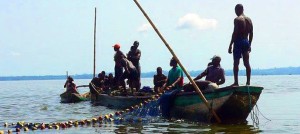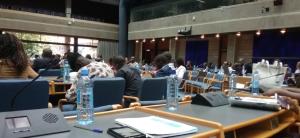Introduction
Africa is a continent endowed with massive resources. According to Nkrumah (1965), Africa has vast resources which have enriched other continents at the loss of Africa. In addition to Africa being home to 53 of the most important minerals in the world, the continent has great forests, water, arable and pasture lands, and a youthful population which when properly tapped into translates to development. Nkrumah notes that even with possession of all these resources, Africa cannot show much when it comes to industry and manufacturing. But why is it that Africa has not developed even with all these resources? Have the existing approaches become null and cannot steer Africa’s development forward? Is it because Africa has heavily depended on aid-led development or because of their agrarian nature of economies?
Background
Countries of the world, both in the Global North and the Global South, are striving for development. They are striving to bring about a structural change in the economic sphere through increase in manufacturing and employment opportunities, and technological advancement. Additionally, there is an attempt to reduce poverty levels and bridge the income inequality gap between the North and South and between the people of the world (Szirmai, 2015). In order to achieve this, states have adopted development-led strategies. These strategies lay down the priority goals and explain the way to achieving these goals. They also set down the policy tools and provides the duration within which the goals should be achieved. They are visionary and address the medium-term and long-term issues to be addressed (Priewe, 2015).
States have adopted different strategies for development. For instance, when the import substitution strategies came to an end in Latin America, debate on whether substitution or inward development was better than export orientation or outward development arose. In the end, export orientation strategy emerged as the winner. The successful Asian countries including Korea, China and Vietnam applied the export promotion policy. It should be noted that when pitching for export-oriented strategy, trading terms on demand elasticity and technology are key factors. When a country exports commodity with low income and price elasticity, then growth and development are low, and the reverse is true (ibid)
Kenya developed a policy framework in 1996. The policy was intended to ensure achievement of industrialization by the year 2020. The policy emphasized on supporting target industries to encourage their growth and promote export. These industries included metallurgical, non-petroleum-based chemical, petro-chemical, pharmaceutical, machinery and capital goods industries. But even with such policy in place, the top imports of Kenya are Refined Petroleum, Cars, Packaged Medicaments, Wheat, and Hot-Rolled Iron, importing mostly from China, United Arab Emirates, India, Saudi Arabia, and Japan. (OEC, 2019)
Nature of Africa’s economies
African states’ economies are agrarian in nature. Nkrumah (1965) argues that Africa continues to rely and depend more on agriculture and mining as sources of its national income when the developed countries depend on industry, manufacture and commerce. The low income and price elasticity of the agricultural products renders development minimal.
Six decades since the end of colonialism, African countries are still struggling with underdevelopment. Strategies have been employed to salvage these states out of the poverty cocoon but not much has been achieved. With majority of these states being agrarian, their competition at the international stage bears minimum fruits as they compete with states that are producing high value products. A case in point, Sub-Saharan Africa’s contribution to global trade was and remains marginal. Compared to East Asia between 1990 and 2012, East Asia’s contribution to world trade grew almost fourfold (Priewe, 2015).
Efforts to adopt a policy that will see African countries move out of being agrarian and focus more on high value commodities has born minimum results. For instance, in Ethiopia, an industrial policy has been adopted. But, even with the policy, there are no actual details on how the policy will be executed. This presents a challenge on how Ethiopia, and the other African countries will catch up with the already developed countries through economic transformation (Oqubay, 2015).
General path to development
After world War II, states embarked on strategies that would enable quick development. Such ideas did not however yield the desired results. States especially those in the Global South practiced import substitution policies such as tariffs but this too was not successful. As a result, many concepts emerged including the Washington Consensus in 1989, and neo liberalism. liberalism (Priewe, 2015).
The Washington Consensus
In 1989, John Williamson provided a summary of economic policies that were perceived as better strategies for economic development in Latin America. This summary was a consensus by four institutions based in Washington including the State Department, the Treasury, the World Bank and the International Monetary Fund (IMF). The consensus was a response to the state’s role in opening up the economies through industrialization and import substitution. Currently, the consensus focuses on privatization, market liberalization, and macroeconomic policies such as redirecting public expenditure to public goods such as education and infrastructure. The economic growth of countries that employed the policies of the Washington Consensus were limited. For instance, Latin America’s years of employing the consensus policies showed more stagnation than those in which it had employed other economic policies such as import substitution. (Serra & Stiglitz, 2008).
Neo-liberalism
Neo-liberalism, a concept developed in the nineteenth century is a model that believes that markets operate best when there is no government intervention and regulation. It advocates for policies that will ensure a free market in which there is free flow of goods, labor and capital within the financial markets. It calls on avoiding fiscal policies but instead give priority to price stability through self-regulation overgrowth and employment objectives. The main reason behind neoliberalism is the perception that developing countries as well as transmission economies are affected by market distortions therefore invisible hand of the government and lack of regulation translates to growth and development (Clark & Clark, 2016).
The main tenets of neoliberalism that leads to economic growth are free trade and free financial flows across borders. With the free flow of goods and services, it is presumed that the developing economies can tap into exploiting their low labor costs and raw resources while the developed states which are capital intensive will be able to provide technology and capital. That opening up the borders serves as a source of Foreign Direct Investment (FDI)
Theoretical review
World Systems Theory
The World Systems Theory is a discourse in International Relations that looks at the global system through the lens of development and underdevelopment. The proponents of this theory motivated by 1968 world revolution conceived the idea that to understand the global inequalities manifested in underdevelopment and development in nations across the globe, one needs to look at the systems and structures that the world is built on. The core idea of the theorists is that global power relations have shaped development leading to institutionalized exploitation which has resulted in a stratified global structure (Chase-Dunn & Grell-Brisk, 2019). The world systems theory focuses on the division of labor as well as the market as key forces that have engendered the inequalities that characterize the world today. The contribution of this theory to the field of International Relations is massive. First, it drove the focus of the discipline to the world insofar as the level of analysis is concerned by theorizing that the whole system of the world was a proper unit of analysis. The second contribution is that it a sociological, historical and economic conversation into international relations.
The World Systems has several key assumptions. First, it views the world as a “social system” with structures and members who are governed by rules (Martinez-Vela, 2001). It is a dynamic system where some features change but others remain static. They also assume that life in this system in self-contained meaning it is driven by internal dynamics (Martinez-Vela, 2001). The other assumption is that there are opposing forces in the system and each force seeks to benefit at the expense of others. The proponents of this theory take the world economy as this system and thus assume that market forces and labor as the driving forces and not political forces. They assume that the relationship among the countries in the system is interdependent where countries depend on the others for some necessities (Martinez-Vela, 2001). The approach also assumed that all countries must follow a certain developmental path.
Different concepts are synonymous with the world systems theory. For example, Immanuel Wallerstein introduced a three-tier world system whereby there are the core, the periphery and semi-periphery. Other theorists such as Amin and Frank conceived the globe as a dichotomy of core and periphery. Recently, there have emerged key concepts such as the global north (the core) and the global south (the semi-periphery/semi core and periphery). The south-south relations and the north-south relations have their roots in these concepts.
The Core represents the developed world while the periphery is the developing country. The semi-core are the economies in transition which bear characteristics of both the core and the semi-core and this explains why sometimes the semi-core and periphery are clustered together within the global-south nomenclature.
Conclusion
The reasons why it has been difficult to adopt an export driven policy for economic development in Africa is up to us to interpret based on the above research. Aid dependency, agrarian nature of economies of capitalism?
References
Ahuja A. K. (2014), “Research methods in education”, Saurabh Publishing House: New Delhi, India
Carmines E., G. & Zeller, A., R. (1979). Reliability and Validity assessment. SAGE Publications: Ohio, USA
Chase-Dunn, C. K., & Grell-Brisk, M. (2019). World-system Theory. Oxford University Press
Clark, C., Clark, E., A. (2016). Challenging Neoliberalism: Globalization and the Economic Miracles in Chile and Taiwan. Edward Elgar Publishers: New York: USA.
Fink, A., Litwin, M., S. (1995). How to measure survey reliability and validity. SAGE Publications: Los Angeles, USA
Gertrude H. H., (2008), “Handbook of Transdisciplinary Research”, Springer Netherlands: Netherlands
JHA (2014), “Social Research Methods” McGraw Hill Education: Tata, India
Lavrakas, J., P. (2008). Encyclopedia of survey research methods. SAGE Publications: Ohio, USA
Martínez-Vela, C. A. (2001). World systems theory. Engineering system division, 83, 1-5.
Nkrumah, K. (1965). Neo-colonialism: The last stage of imperialism.
Observatory of economic Complexity (OEC), (2019): https://oec.world/en/profile/country/ken
Oqubay, A. (2015). Made in Africa: Industrial Policy for Ethiopia. Oxford University Press: Oxford, United Kingdom.
Ronge, E., E., Nyangito, H., O. (2000). A Review of Kenya’s Current Industrialization Policy: KIPPRA Discussion Paper No. 3: Nairobi, Kenya.
Priewe, J., (2015). Eight strategies for development in comparison, IPE Working Papers 53/2015, Berlin School of Economics and Law, Institute for International Political Economy (IPE).
Serra, N., Stiglitz, J., E. (2008). The Washington Consensus Reconsidered: Towards a New Global Governance. Oxford University Press: Oxford, United Kingdom.
Szirmai, A. (2015). Socio-economic Development. Cambridge University Press: Cambridge, United Kingdom.
Walter R. (2010). Educational research: an introduction. D. McKay Co.
Wagner, C., Kawulich, B., B., Garner, M. (2012). Doing Social Research: A Global Context. McGraw-Hill Education: Berkshire, United Kingdom
ed on aid-led development or because of their agrarian nature of economies?


